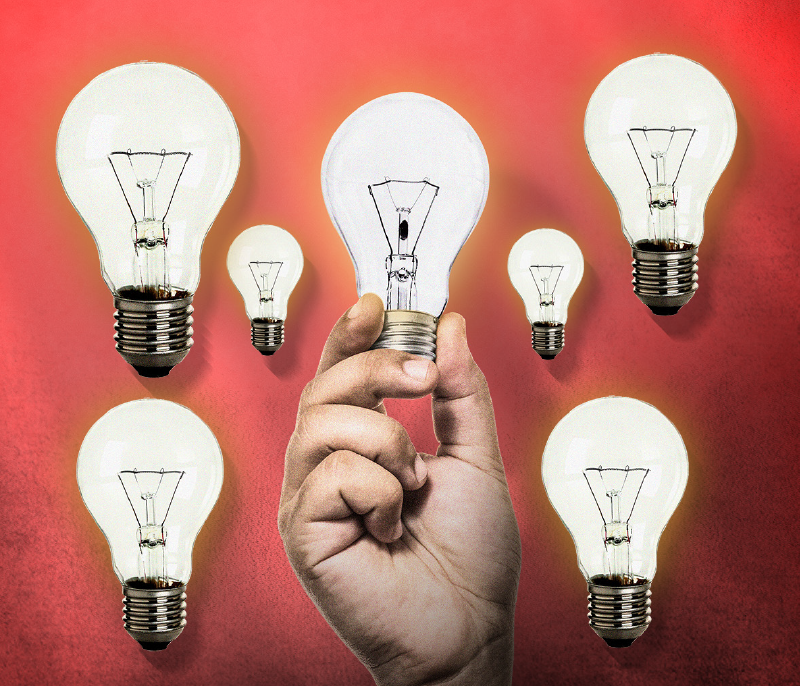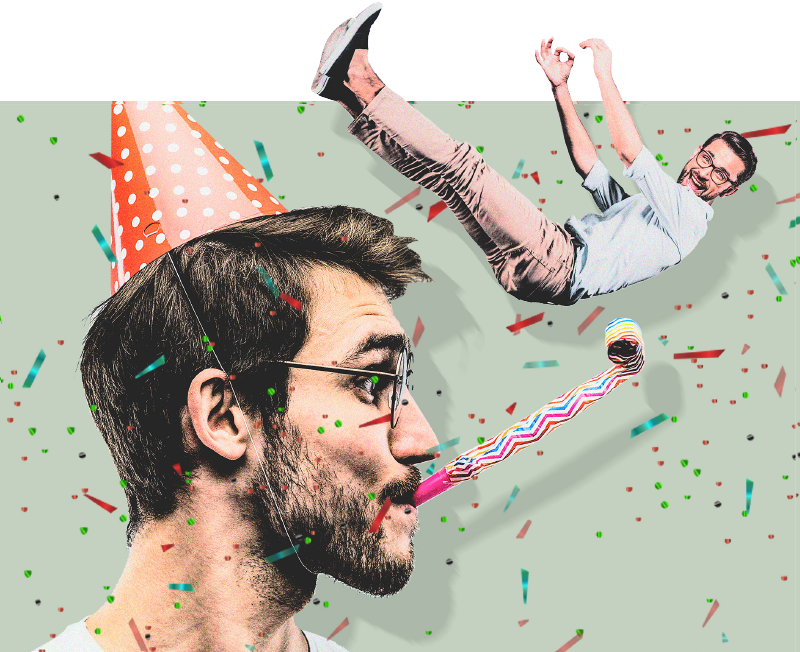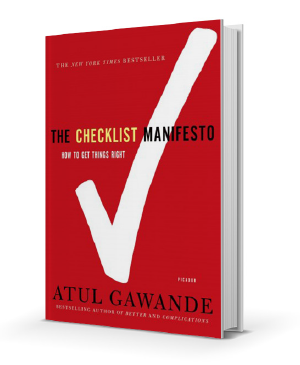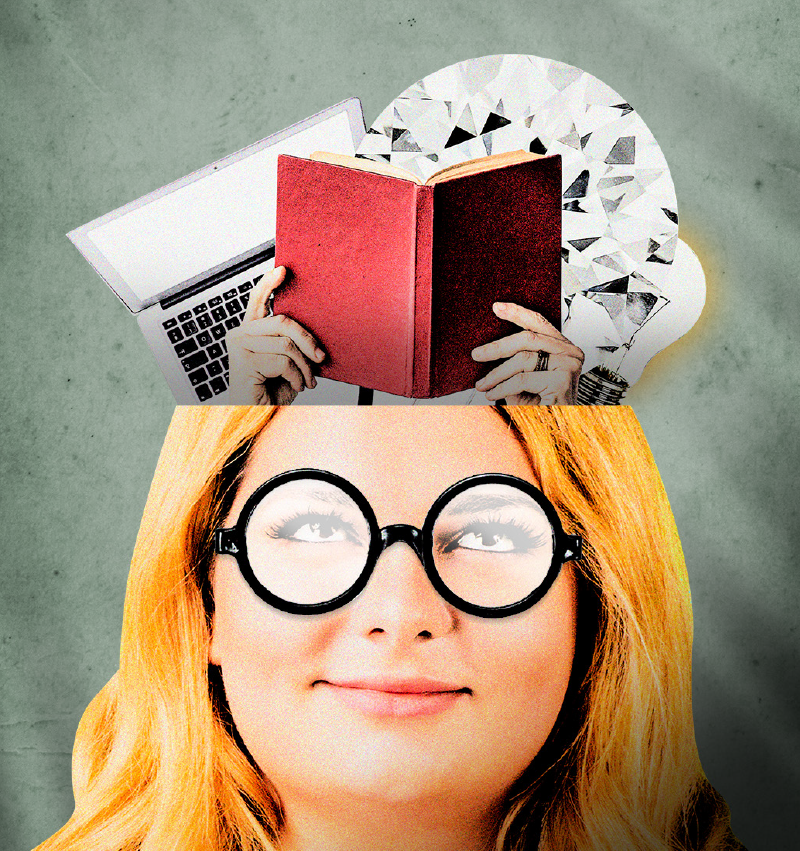WHERE ONCE FAILURE WAS the domain of losers, it’s now a cause célèbre, a hard-earned badge of redemption and authenticity. In ads for sports shoes, athletes relish recalling how many times they missed the winning shot; in magazine articles, CEOs take pride in recalling their blunders, politicians and celebrities their lowest moments, even their disgraces. The benefits of failure shouldn’t be news to us. Toddlers develop into autonomous, well-functioning selves by testing boundaries. Fall over, pick yourself up, fall over with a little less pain the next time.
The wisdom of learning from failure is incontrovertible, and the benefits manifold. From preventing recurring mistakes, to spurring innovation, to helping you find your true course, to uncovering opportunities, it often begins with failure. Yet for most of us mortals, this advice is still hard to take: failure is painful, disappointment cuts deep, and we stake so much psychologically on being right that denial and blame-shifting remain our default responses when things go wrong.
Failure also involves some very real costs — it wastes money and can destroy morale, infuriate customers, damage reputations, and sometimes lead to legal trouble and even tragedy. For small business owners, there is the legitimate risk that a major failure — choosing a wrong location, expanding to a new market, or opting not to adopt a new technology — could mean the end of their business.
As a result, despite all the good talk about failure, most businesses continue to do the opposite. They punish mistakes, shoot the messenger bearing cautionary news, deny errors, blame others, make no systematic effort to study it and basically ignore whatever messages failure has to teach them.

And in doing so, they double down on their errant course of action, stifle risk-taking and take a step toward creating the very thing they are trying to avoid — a terminal misstep.
Advertisement
As the business world becomes more complex and uncertain, the issue is becoming more critical. In 2019, leading a business organization is not so much about good management. It’s about how you respond to new threats, new trends, new technologies. Nobody gets it right the first time anymore.

Adapt: Why Success Always Starts With Failure by Tim Harford
“It’s not about effective planning. It’s about trial and error,” Tim Harford, a Financial Times columnist writes in his book, Adapt: Why Success Always Starts With Failure. “Those who can afford to fail more times will succeed in the long run,” he says, echoing the famous quote of IBM’s Thomas Watson, Sr: “The fastest way to succeed is to double your failure rate.”
There is a quote often attributed to the German statesman Otto von Bismarck that “Only a fool learns from his own mistakes. The wise man learns from the mistakes of others.” But recent research indicates it actually helps to know the hurt firsthand.
“All the advice tells you not to dwell on your mistakes, to not feel bad,” says Selin Malkoc, co-author of the study and a professor of marketing at Ohio State University’s Fisher College of Business. “But we found the opposite. When people concentrate on how bad they feel and how they don’t want to experience these feelings again, they are more likely to try harder the next time.”
In the following pages, we provide some tips to help you prepare for when things go wrong and to get the best out of situations when they do go awry.
Advertisement
There is, however, no way to take the pain out of failure. At times like that, it helps to take a philosophical view. On top of trying to tell yourself the feeling of disappointment is salutary, keep in mind that in some mysterious way, the possibility of failure is what makes games worth playing, business pursuing, and ultimately life worth living. When there is no challenge, the joy evaporates (try playing a video game designed for four-year-olds and see how long that stays fun!).
The poet Rainer Maria Rilke summed it up nicely: “The purpose of life is to be defeated by ever greater things.”
In business, those challenges are waiting every day. Go down valiantly.
20 Ways to Make the Most of Failure
“Failure is like laying a rotten egg,” notes James Gattas, owner of James Gattas Jewelers in Memphis, TN. “The smell never goes away, but you are a lot more careful not to lay another one.” Too true. Here are 20 tips to help you navigate those foul-smelling waters.
Contain the downside
1There is a key caveat underlying all failure literature, and that is to be able to enjoy the benefits, you’ve got to be able to survive the experience, thus the advice to fail small and cheaply. Always ask, “What is the minimum viable experiment?” says Roy H. Williams, author of The Wizard Of Ads. It also helps to stick to “adjacencies,” or areas where you have some related business experience. The business world is littered with the dead projects of companies that strayed too far from their core competence. Even a small failure can be expensive, but in the long run, ignorance tends to be even more costly.
Fail fast
2Joel Wiland, owner of J. David’s Jewelry in Broken Arrow, OK, says that after 25 years in the business, he has learned that one of the most valuable skills one can possess is how to fail efficiently. “Most people wait too long, and hang on too long, which is the worst part of failure. When you learn how to fail faster, it is not nearly as costly and at that point (the experience) can actually be profitable from the knowledge gained.” Launch quickly, measure the data, view all feedback — both negative and positive — as a gift. Revise, evolve.
Advertisement

Have Plan B, C and D ready
3“Expose yourself to lots of different ideas and try lots of different approaches on the grounds that failure is common,” says Tim Harford in his book Adapt: Why Success Always Starts With Failure. “This approach is far less intimidating than trying to come up with the best idea ever. You need Plan B, Plan C, Plan D. You need a full quiver of arrows.” Not only does a fallback position make it easier psychologically to be wrong, but it enables you to take away a wider range of lessons from each mistake, he says. Ideally, you want to try a mix of off-the-wall ideas and by-the-book practices.
Debrief

Rebel Talent: Why It Pays To Break The Rules At Work And In Life by Francesca Gino
4When a business venture fails, sure, it sucks. But when a military expedition fails, people die. The life-or-death nature explains the military’s relentless review system, known as “after-action reviews” (AARs) of each combat encounter and combat-training exercise. “As in business, the reasons for success or failure in combat often are not clear,” writes behavioral scientist Francesca Gino, author of Rebel Talent: Why It Pays To Break The Rules At Work And In Life. “AAR participants discuss four key questions: What did we set out to do? What actually happened? Why did it happen? What are we going to do next time?” To be sure, failure reviews aren’t much fun. Most people would rather sweep the little disaster under the carpet and look forward. But then the learning opportunity is lost. Such “reviews work best when they are fast and to the point; take place frequently, through good times and bad; and are forward-looking, with an emphasis on learning, not assigning blame,” write Julian Birkinshaw and Martine Haas in Increase Your Return On Failure.
Dig deep
5When Amy Edmondson, a professor in leadership and management at Harvard Business School, discusses failure with executives, she often asks them to consider her Spectrum of Reasons for Failure, which lists causes ranging from deliberate deviation to thoughtful experimentation. “When I ask executives to estimate how many of the failures in their organizations are truly blameworthy, their answers are usually in single digits—perhaps 2 percent to 5 percent. But when I ask how many are treated as blameworthy, they say (after a pause or a laugh) 70 to 90 percent. The unfortunate consequence is that many failures go unreported and their lessons are lost.” To be sure, managers need to make a distinction between excusable and inexcusable mistakes, but often by probing deeper, one can discover underlying causes that are more important. Was the cause of an error carelessness, lack of training, fatigue or some other issue?
Donnie Blanton recalls such an instance at his store, Brittany’s Fine Jewelry in Gainesville, FL: “Many, many years ago, we ran a vendor flyer in November. We were hoping to encourage our customers to shop early and put Christmas gifts on layaway. It was a complete failure. We have never attempted to promote a flyer since. Looking back on it, the merchandise eventually sold, so our real mistake was in thinking that we were going to change our clients’ buying patterns.” As the line goes, good judgment comes from experience. Experience comes from bad judgment.
Fail differently each time
6A crucial question to ask yourself about your mistakes is, “Am I failing differently each time?” says Steven Levitt, author of the business bestseller Freakonomics. For all our talk here about failure, what we are actually talking about is learning. Fail the same way over and over, and you’re clearly not learning.
Keep a Failure Résumé
7A failure résumé — or Anti-Portfolio or CV of Failures or whatever name you give it — is a simple idea: when you fail, write it down. But instead of focusing on how that failure makes you feel, take the time to step back and analyze the practical, operational reasons that you failed. What’s the point of such self-flagellation, asks Tim Herrera in his Smarter Living column for the New York Times? “Because honestly analyzing one’s failures can lead to the type of introspection that helps us grow — as well as show that the path to success isn’t a straight line.” It can also be a good reminder of how much you’ve tried, said Melanie Stefan, a lecturer at Edinburgh Medical School. “Sometimes I look back on them and see how much I’ve actually struggled to be where I am. That’s a powerful reminder that I deserve to be here,” she said.
Beware your biases
8The human capacity for self-deception is profound. It thus helps to be aware of the kinds of biases that can undermine a proper evaluation of a project. Among the most common psychological blind spots related to failure are the “God complex” (feelings of infallibility), chasing your losses (taking bigger risks to win back lost money), or hedonic editing (when we try to convince ourselves that a mistake doesn’t matter, or finding some way to reinterpret our failures as successes). Few of us can make purely rational decisions. Beware of your biases.
Know what failure looks like
9Recognizing failure can be surprisingly difficult. We’ve been trained that “persistence pays off,” so it feels wrong to cut our losses and label an idea a failure. “Decide what success and failure would look like before you launch an initiative, “ says Columbia Business School’s Rita Gunther McGrath, noting that some big corporations build exit strategies into their projects to ensure that doomed or resource-sucking efforts do not drag on. “Being able to recognize a failure just means that you’ll be able to re-cast it into something more likely to succeed,” adds Harford. In such instances, feedback — either in the form of data or third-party reviews — is essential for determining which experiments have succeeded and which have failed. “Get advice, not just from one person, but from several,” he says.
Use symbolic rituals
10Heroic Failure Awards, Failure Walls (a space in your back room where you and staff can share your “growth lessons”), or a Failure Hour (a weekly meeting devoted to things that went wrong and can be improved) can help create an environment in which failures are openly and seriously discussed. “Something magical happens to failure when it’s openly acknowledged,” writes business author Jeff Stibel in a column for Bizjournals.com. “Paradoxically, it becomes less of a big deal.”

Celebrate intelligent failure
11As 3M’s legendary chairman William McKnight once said, “The best and hardest work is done in the spirit of adventure and challenge … Mistakes will be made.” A risk-averse culture, on the other hand, is dangerous. Once you quit innovating and become guardians of the status quo, the end is only a matter of time away. “One division head I worked with would say to his team members during their performance reviews, ‘Show me your scrap heap,’” recalls Columbia’s Gunther McGrath. “The request perfectly conveys the idea that high achievers will, of necessity, try some things that don’t work out.” Tom Peters sums it up another way: “Reward excellent failures. Punish mediocre successes.”
Fail from the front

Whoever Makes The Most Mistakes Wins by Richard Farson and Ralph Keyes
12The example set by owners and management is crucial. Far from revealing weakness, admitting mistakes shows a leader’s self-confidence and helps forge closer ties with employees. “A blunder admitted is empathy earned,” write Richard Farson and Ralph Keyes in Whoever Makes The Most Mistakes Wins. “Leaders who don’t cover up their errors reveal themselves as human—they become people whom others can admire and identify with.” Adds Edmonson: “Only leaders can create and reinforce a culture that counteracts the blame game and makes people feel both comfortable with and responsible for exposing and learning from failures.”
Share what you learn
13While it’s useful to reflect on individual failures, the real payoff comes when the lessons are shared across the organization or even better, they become part of institutional memory. At Coca-Cola, stories about the failure of New Coke are still told 30 years on. Former CEO Roberto Goizueta got years of one-liners from the fiasco. “Admitting his mistake conveyed to his employees better than a hundred speeches or a thousand memos that ‘learning failures,’ even on a grand scale, were tolerated,” says Farson. Today, traditional soft drinks now account for less than two-thirds of Coke’s business. “They saw the handwriting on the wall, and they evolved into ready-to-drink teas and coffees and juices and dairy products. Coca-Cola knew it was time to reinvent themselves; to transform from one thing into another. This is why — after a continuing series of mistakes, failures, and course corrections — they will continue to thrive,” says Roy Williams.
Hail the bad-news messenger
14“The biggest mistake you can make as a leader is to shoot the messenger and bury the bad news,” write Birkinshaw and Haas. “Big, painful, expensive failures are easy to spot. But in many organizations, any failure that can be hidden is hidden as long as it’s unlikely to cause immediate or obvious harm.” The goal should be to identify it early, before it has mushroomed into disaster. Among the ways to do this: creating a shared understanding around the types of failures that employees can expect to happen at work, being accessible as a leader both in terms of personality and physically, and rewarding the messenger who brings up bad news.
Use checklists

The Checklist Manifesto by Dr. Atul Gawande
15In his book The Checklist Manifesto, Dr. Atul Gawande argues that in our complex modern world, failure results not so much from ignorance (not knowing enough about what works) as from ineptitude (not properly applying what we know works). His solution — checklists. In medicine, a field where the available well of learning expands exponentially every year, the problem is “making sure we apply the knowledge we have consistently and correctly,” says Gawande. A recent study in UK hospitals suggested that wider use of checklists might prevent a staggering 40 percent of deaths during treatment. If surgeons can fill out checklists, the rest of us should probably be willing to run our expertise by the numbers as well.
Give back the pen
16It’s not just at the organizational level that failure can be “a gift.” Individuals, likely including your employees, can benefit from its didactic embrace. The problem is that many managers are what psychologists call “over-functioners” — faced with a challenge in the store, they spring into fixing mode, taking control, attacking the issue, offering instructions and dealing with it. As with raising kids, it often helps to let your underlings fail to allow them to develop, even if it creates some short-term anxiety or uncertainty. When a person is stuck or struggling, ask them, “What do you think you should do? Go try it and I’ll give you some ideas and then you see how it goes.”
Revisit and reboot
17Jill Keith, owner of Enchanted Jewelry, Danielson, CT, says she felt like a failure when she closed the family store and then tried to resurrect it in a new location. “Fast forward a year later and we see nothing but blessings,” she says. The episode gave her an understanding that failure is complicated. “Ultimately, it’s just a dot on a timeline. Perspective on it varies with time and distance.” Revisit your old ideas regularly. Not only will the lessons still be relevant, but their time may have arrived.
You are not your failure
18A lot of us look to athletes for inspiration, especially when it comes to taking on a daunting challenge. But according to British sports psychologist James Hamilton, many elite athletes have a pretty unhealthy view of success and failure, associating defeat with an all-round failure of the self. To be sure, it can fuel a heightened drive, leading them to put up with huge levels of discomfort and deprivation, but it can also result in risk-avoidance and self-blame when things don’t pan out as they had hoped. A much healthier view, he says, is to remember that any failure “stands separate” from you.

Educate your subconscious
19The pioneering behavioral psychologist Daniel Kahneman changed the standard view that humans are rational economic actors. The Soviet Union proved something similar for economies — what looks to be efficient rationalization is often a system that can’t learn or adapt. It’s the same for just about any business. British advertising great David Ogilvy had an interesting take on this: “The beginning of greatness is to be different. And the beginning of failure is to be orthodox. Big ideas come from the unconscious. Stuff your conscious mind with information, then unhook your rational thought process.” Go expose yourself to ideas and experiences.
Share your failures
20Look for opportunities to share your mistakes, be it at a lunch, an industry peer group or some other professional gathering. “If you’re having lunch with some of your peers, then revealing failure is a great strategy to induce levels of liking by reducing malicious envy,” Amy Edmondson says. Adds Roy Williams: “When people share their experiences in an atmosphere of respect and mutual trust, a special kind of magic occurs: smart people become wise and their businesses begin to grow.”
FAILURE TEACHES THE BEST LESSONS
By Bruce Goodheart, co-owner, Goodheart’s Jewelry, Overland Park, KS
Say the word “failure” to a group of people and watch their expressions. Most will cringe. Some will say, “Everyone fails at one point in their life.” Among the group will be one person who will smile and not say anything. He knows what failure is, because he has been through it, maybe more than once.
Personally, I believe failure is not having an honest working plan.
October 15th, 1988. Los Angeles Dodgers: 3, Oakland A’s: 4. Bottom of the ninth inning, one man on second. An injured Kirk Gibson limps to the plate. Dennis Eckersley throws a fastball, Gibson hits a home run, and the Dodgers win, 5-4. That one pitch, that one fastball changed the next evening, October 16th, for me.
My brother and I had planned a jewelry fashion show with a high-end women’s dress shop. 12 people showed up. Thanks to Kirk Gibson’s home run, everyone stayed home to watch the next World Series game. Vin Scully, the announcer for the LA Dodgers, said, “Kirk Gibson made the impossible happen.” He sure did, and I learned a big lesson.
I don’t consider my fashion show a failure; I do call it poor planning.
Bill Gates said it best: “I failed my exam in some subjects, but my friend passed. Now he’s an engineer at Microsoft, and I am the owner.”
As a jeweler, if you work diligently, ask many questions when you don’t know the answers, and read as much as you can about the jewelry industry, you will succeed.
And don’t be afraid to fail; just be sure to get back up out of the dirt. Remember, you’re one swing away from making the impossible happen.